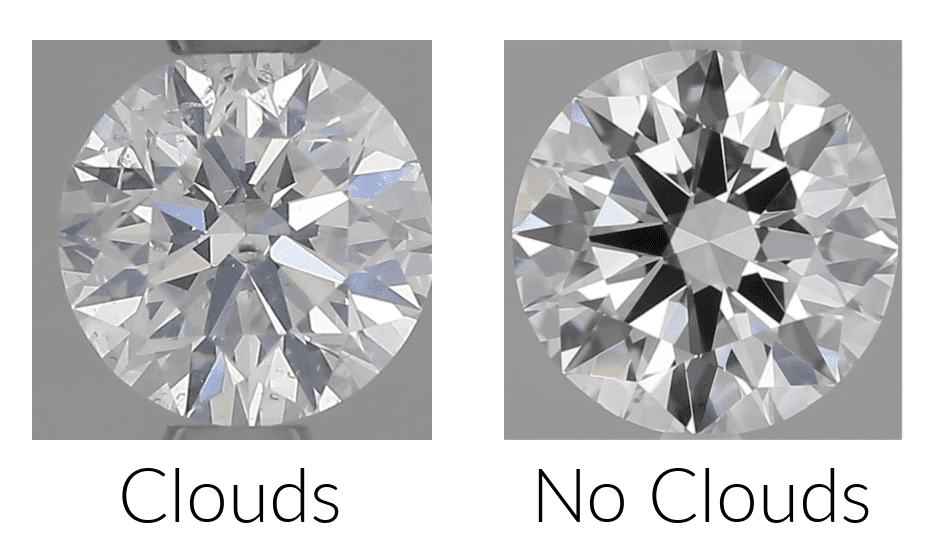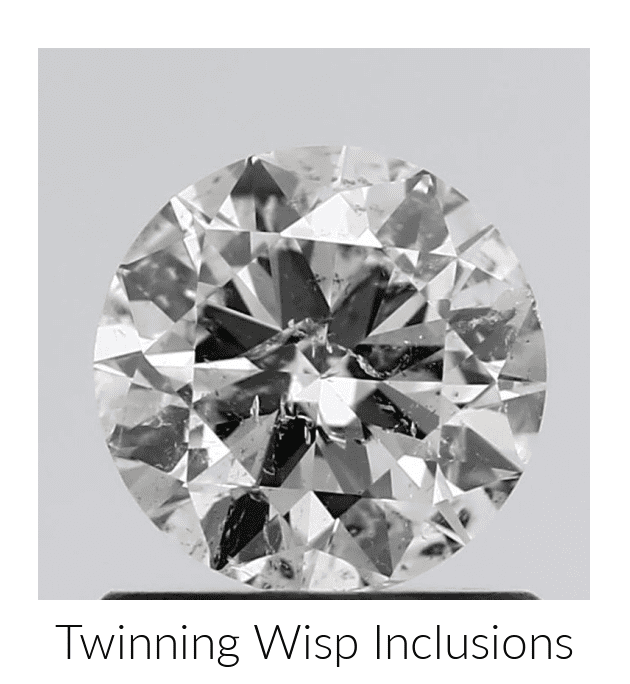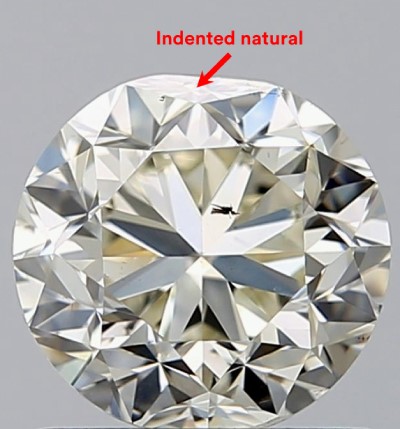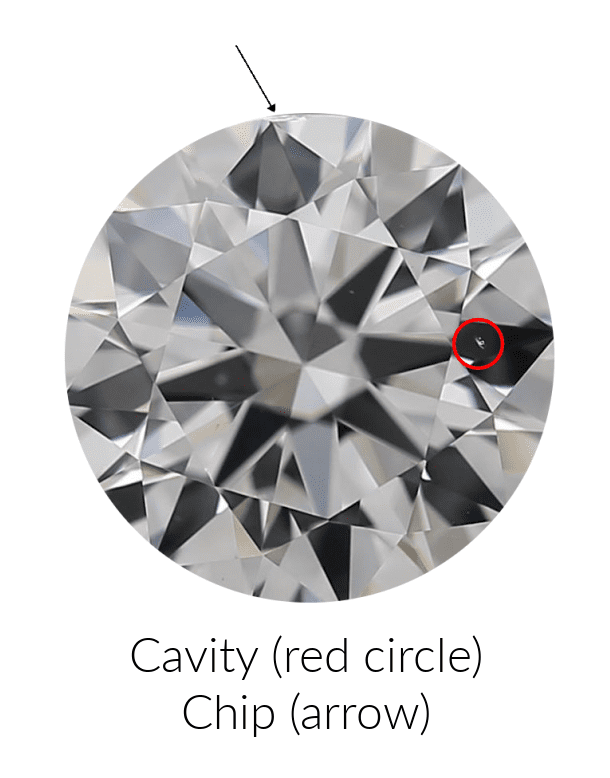What are Diamond Inclusions | Rare Carat
Entering the Inclusion Zone
Inclusions are irregularities inside of a diamond. But how did they get there? And why do we care?
Have you ever picked up a chunk of ice from a frozen pond? There are invariably a few bits and pieces suspended in it - the odd leaf from an overhanging tree, a speckling of silt, a very unfortunate fish...The detritus in the ice is not dissimilar to the inclusions in a diamond. They are blemishes trapped in the interior of the solid that bear witness to the environment in which it formed. You are going to get a very different set of inclusions from a lump of ice hacked out of your freezer. Pea anyone?
That is why inclusions in diamond can be so exciting. They tell the story of its formation.
Let's break this down into the ages of diamond.
Diamond Infancy
Crystal:
Suspended in the diamond, a mineral crystal derives from the rock in which the diamond has grown. Sounding a lot more elaborate than they actually are, crystal inclusions are, more often than not, tiny, rounded dots known as 'pinpoints', which if spotted in clusters are referred to as 'clouds'. The most prolific are small, black flecks of graphite, or their moniker, 'carbon spots'. However, on occasion, things get interesting, and larger crystals form. Common bedfellows of diamond are red garnet, olivine (gem variety, peridot) and the vibrant green, chrome diopside. It is incredibly rare to find inclusions such as this, but when one is stumbled upon, it will have collectors drooling.

Growing Pains
Graining:
The phantom in the machine. This peculiar and enigmatic feature appears as parallel bands running through the interior of the stone. Usually, they are barely visible, just catching the eye at certain angles under close scrutiny, although they can be colored or reflective. The cause of graining? Hanging out at two hundred kilometers below the surface of the earth. The layers of regularly stacked carbon atoms that make up diamonds sometimes slip out of place, if it all gets a bit too much, either when they are down there, or during their forceful expulsion. However, as sorry a state as this may sound, it is actually the main cause of color in pink diamonds. Some of us do well under pressure.
Twinning Wisps:
Ever changed your mind? Of course you have. A diamond can too. The developing crystal may decide to change growth direction at some point. If it does, it can result in a minute thread-like series of crystals or channels at the point of change.

Feather:
A rather delicate way of saying a fracture in the diamond. We all have our breaking point.

Adult Life
And it is not like it stops there. Some inclusions are the result of the manufacturing process.
Bearding:
For a rough diamond to be given a circular outline, it is 'bruted', that is, spun exceptionally quickly against a diamond-impregnated shaping wheel. This will form the diamond girdle (the line that runs the circumference of the stone, dividing the crown and the pavilion). If too much pressure is applied to the diamond in the process, minute, whisker-like fractures develop, reaching into the stone. Unfortunately, it is the type of beard you can't shave.
Indented natural:
Occasionally, a feature on the rough crystal face, such as an etch pit (or what I prefer to call the 'battle scar' of the diamond), will sit a little deeper than the polished surface and remain visible on the finished stone. Admirably stubborn.

Cavity:
If there is a small crystal lurking just beneath the diamond's surface, it can easily be pulled out during polishing, leaving a little hole - or 'cavity' on the facet. Like you pulled a raisin out of the top of a rock cake.

Internal laser remnant:
Lasers are frequently used in the cutting process. On occasion, the direction of the beam will be thrown off by a reflection, scarring the interior with odd, little black squiggles.
So, why are they Important?
Well, many valid reasons.
They go towards determining the value of the diamond. The clarity grade of the diamond is based on the number, the color, the size, the position and the type of the inclusions.
Most every diamond is going to have a unique set of inclusions. This is great, because they can be used as a fingerprint for the stone. Increasingly, and rightly, consumers (that’s you) want to know where your diamond has come from (you do - it’s important). The journey of a rough diamond to the one on your finger is a hectic one, exchanging hands many, many times. This can make it pretty tough to pin down a diamond's starting point. Inclusions are being used by institutes like GIA (Diamond Origin Report) and company’s like Sarine (Sarine’s Journey) to map the inclusions in the rough, so that when the diamond is cut, it can be identified by those quirky little features inside it. Seriously clever stuff.
They can reassure you that the sparkler you are after is the same as the one described on the grading report. Ok, it is unlikely that you’re going to be able to match the plot to the stone after a quick glance over the counter - but if you are in any way anxious, and can get access to a magnified view of the diamond, get your retailer/friendly Rare Carat gemologist to talk you through what you are seeing.
Geologists love them. The study of diamond inclusions, seeing as we are never going to be able to access the extreme depths in which they have formed, assists us towards an understanding of what goes on down there. Over the past few decades, diamonds inclusions have helped us get a handle on early plate tectonics, the carbon cycle and what it is that makes up our inner world. None of Jules Verne's gigantic mushrooms yet. But here's to hoping.

